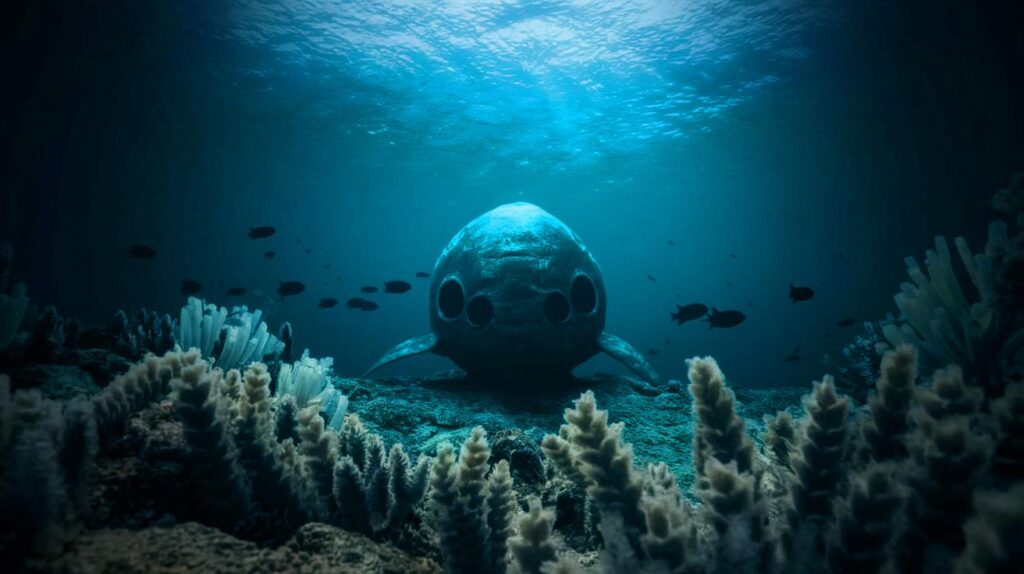| In Brief |
|
The mystery of the strange sounds coming from the Mariana Trench has puzzled researchers globally for a long time. These sounds, dubbed biotwang, have been identified as resembling whale calls, which led to speculations regarding their origin. Thanks to recent technological advancements, a team of researchers has been able to uncover the secret behind these mysterious noises. This text delves into the fascinating discoveries of this underwater acoustic investigation, shedding light on the crucial role of Bryde’s whales in this enigmatic acoustic phenomenon.
An Unprecedented Acoustic Investigation in the Mariana Trench
The Mariana Trench, with its unfathomable depths, presents a fascinating research terrain for scientists. In 2014, strange and unprecedented sounds were detected by underwater gliders used by researchers studying this region. These mysterious noises, characterized by a low rumble followed by a high-pitched ringing, resemble the sounds of spacecraft from science fiction films, which sparked immense curiosity. Initially, researchers were perplexed by these unknown sounds. A hypothesis proposed in 2016 suggested that they could originate from large baleen whales, although these sounds did not match any known whale calls to date. Thanks to new technologies, including artificial intelligence, researchers have made progress in their investigation, providing new insights into this acoustic phenomenon.
Bryde’s Whales in the Spotlight
The recent study focused on the use of machine learning algorithms to analyze over 200,000 hours of audio recordings. These technological advancements allowed researchers to identify the distinctive sounds produced by Bryde’s whales. Researchers observed nine Bryde’s whales emitting this unique sound, thus confirming their role in the origin of these noises. Ann Allen, the principal author of the study, commented on these findings, emphasizing that the recurrence of these events could not be mere coincidence. By correlating these sounds with the migratory patterns of Bryde’s whales, the team revealed that these sounds were only perceivable in the northwestern Pacific, suggesting a specific population responsible for these enigmatic calls.
Underwater Communication of Whales
Although the source of the sounds has been identified, the mystery of their function remains. Ann Allen proposes that these sounds could serve as contact calls, enabling whales to locate each other in the vast ocean expanse. This type of marine “Marco Polo” could be essential for the survival and social cohesion of Bryde’s whales. However, numerous questions remain unanswered: why are these sounds so distinctive, and what is their exact role in the communication of these cetaceans? Further research is needed to deepen our understanding of this fascinating behavior and to elucidate the mysteries of underwater communication in whales.
Implications for Marine Conservation
The discoveries regarding the sounds emitted by Bryde’s whales have significant implications for marine conservation. By gaining a better understanding of these cetaceans’ communication modes, researchers can develop more effective strategies to protect these animals and their habitats. Preserving marine environments is crucial for the survival of whales and many other marine species. Moreover, this research highlights the importance of technological innovation in exploring the oceans and marine ecosystems. With the growing threats of climate change and pollution, it is essential to continue exploring and protecting the hidden mysteries of the ocean depths.
The recent discoveries about the mysterious calls of Bryde’s whales illustrate the complexity and richness of marine life. As researchers continue to explore the depths of the ocean, new questions emerge. How have these whales developed this unique mode of communication? What other discoveries await us in the unfathomable abyss? The answers to these questions could transform our understanding of underwater life and influence future conservation strategies.









